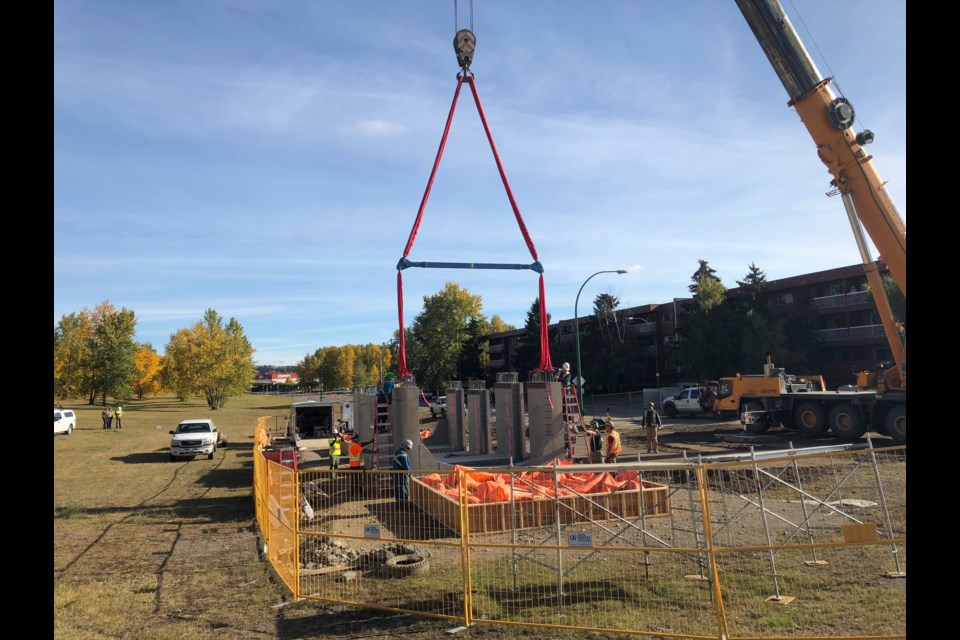Prince George’s sinkhole saga will soon be coming to an end.
On Thursday morning (Sept. 27), crews lifted four sections of concrete replacement chambers into the bottom of the giant hole.
The nine-by-4.8-metre concrete chamber will replace a failed section of sewer pipe, which has caused several sinkholes near the intersection of Carney Street and 20th Avenue over the past few years.
“Concrete really is what large storm drains should be made of so we are replacing an old metal one with concrete and it’s there to help withstand the forces of stormwater that is coming off the hill behind us on Carney Street,” explains Josh Kelly, the city’s supervisor of engery, environment and sustainability, during the Sept. 27 installation.
For the past two weeks, crews have been constructing the chamber on-site and allowing the concrete to cure to a strength that allows it to be lifted by a crane and to withstand the pressure of large storm events, like the one that occurred in June that gave way to the most recent sinkhole.
Kelly says the surrounding metal pipes do not have the same risk of deterioration as the section that caused the sinkhole.
“We believe the issue is related to turbulence from the energy of the water coming down the hill,” he says, adding that metal pipes have a lifespan of 80 to 100 years and the surrounding metal pipes are only half that age.
"So there should be lots of life left in the rest of the pipes.”
The city estimates the entire intersection will be repaved and reopened to traffic by mid- to late-October, depending on weather conditions. Kelly also notes there is still a lot of restoration work to be done, and he won’t have an idea of the final cost of the project until it has wrapped up.
“We have more planning to do about the restoration sequencing,” says Kelly.
He adds as they start backfilling they’ll need to connect a storm main that comes down Carney Street, reconnect a water main, and work on electrical for the street lights, as well as curbs, gutters and asphalt for the pavement.
Kelly says when the sinkhole first appeared in the pavement it was a metre around in size, but he’s uncertain as to how large the underground cavity was, because once they started excavating they lost sight of the size of the original hole.
The city had to undergo an extensive operation to remove the groundwater from around the old sewer pipe, which involved installing dams and three high-capacity pumps to drain the water. It was discovered that over eight metres of pipe had completely deteriorated at the sinkhole.
During heavy rainfall, the deterioration allowed water flows to suck up nearby material into the pipe causing sinkholes to form.
“We have been fighting water the whole time,” says Kelly, adding they’ve finally got a handle on it. “It’s incredible to see how dry and clean it was down there compared to how it was a week and a half ago.”
Kelly says this infrastructure replacement project was unique because it was a response to a major emergency.
“We have had some incredible effort from our consultants and contractors and some amazing work from city utility crews,” he says, adding it’s possible there would be some major infrastructure replacements in the future.
"Hopefully no more like this on an emergency basis.”



